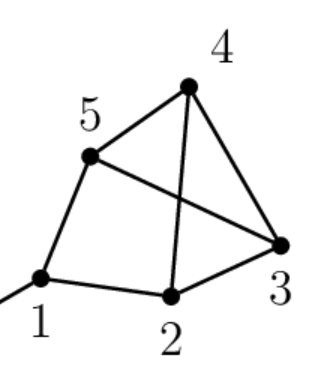The definition of block is
Block of $G$ is a maximal subgraph $G'$ of $G$ with no cut vertex of $G'$ itself.
Of course, there can exist many blocks in $G$.
In particular, isolated vertices, edges in bridge, and maximal $2$-connected subgraph of $G$ are blocks of $G$.
The definition of leaf block is
Leaf block of $G$ is a block of $G$ containing only one cut-vertex of $G$.
First, I found a lemma about $k$-regular tree, whose vertices except leaves have degree $k$.
Lemma: If a tree $T$ of order $n$ has $m$ vertices of degree $k$ and $n-m$ leaves, $k−1$ must divide $n−2$.
Proof: By handshaking lemma, $$ km + (n-m) = \sum_{v \in V(T)} \deg(v) = 2\vert E(T) \vert = 2(n-1)$$ Then $$ (k-1)m=n-2 $$ Since all terms $\in \mathbb{Z}$, $k-1$ divides $n-2$.
I will use $(k-1)m=n-2$ part here.
And this is my guess:
To make the cubic graph with maximum # of leaf blocks, make a $3$-regular tree, and change its leaves into the smallest $3$-regular leaf blocks.
I think the smallest $3$-regular leaf block is as following (but not certain):
So my conclusion is
Suppose $G$ of order $n$ has $\ell$ number of leaf blocks. First, we construct a $3$-regular tree with $n-4\ell$ vertices and $\ell$ leaves. By the lemma, $2(n-5\ell)=n-4\ell-2$. Then $\ell=\frac{n+2}{6}$. After constructing a tree with $n-4\ell$ vertices, change all leaves into the smallest $3$-regular leaf blocks shown above. It adds $4$ vertices to each leaf. Then we can make a $3$-regular graph with $n$ vertices and $\ell$ leaf blocks.
But there are so many assumptions, and such tree exists only when $n \equiv 4$ (mod 6).
So I cannot conclude $\ell = \lfloor \frac{n+2}{6} \rfloor$ is the maximum. Would you help me?

